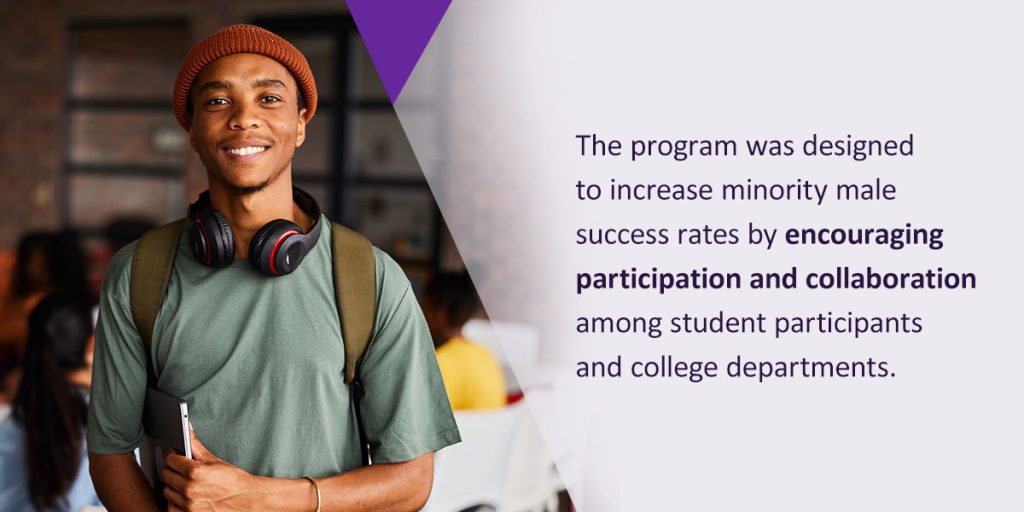A Wall Street Journal article reported that American men are leaving higher education in great numbers. Women now far exceed them in the number of students enrolled in college.
At the close of the 2020–2021 academic year, women made up 59.5 percent of college students, an all-time high, and men 40.5 percent. United States higher education institutions had 1.5 million fewer students than they did five years prior. Male students comprised 71 percent of the decline.
Two years later, statistics continue to show this college enrollment gender gap. Male enrollment numbers have increased slightly, but there is room for improvement. As of October 2023, women are 6.71 percent more likely to enroll in higher education institutions than their male counterparts and 9.33 percent more likely to earn a degree. Similarly, about 58 percent of college students were female in spring 2023, while 41.6 percent of postsecondary and postgraduate students are male.
Why is this gender gap in enrollment a concern?
The concern isn’t just that White American males are not pursuing a college degree or certificate. Across races, there are decreasing numbers of male students enrolled in both two-year and four-year college programs.
This is particularly problematic because there is a strong correlation between education and income levels. On average, people with bachelor’s degrees earn 84 percent more than those whose highest degrees are high school diplomas. While this “college wage premium” varies from state to state, college graduates make an average of $1.2 million more in their lifetime.
Impacts of COVID-19
Despite the COVID-19 emergency being behind us, gender gap concerns have only increased since the global pandemic. In spring 2022, 662,000 fewer students were enrolled in undergraduate programs, which was a 4.7 percent decrease from the previous year. Overall, enrollment in higher education institutions dropped by over 604,000 students, or 5 percent.
The pandemic was especially taxing on public institutions — specifically community colleges, which serve many students with moderate and lower incomes. Community college enrollment showed the largest decline within the public sector, losing 7.8 percent of students or 351,000. Community colleges nationwide have lost 827,000 students since the start of the pandemic in spring 2020.
Women were forced to leave the workforce in droves during the pandemic, largely to take care of school-aged children who were home while schools were closed as part of pandemic lockdowns. Many young men left school to find work to help support their families during a very difficult time, both financially and emotionally.
Part of the reason higher education kept this under wraps is that American higher education institutions were overwhelmed with ongoing issues of racial and gender equality, safety for women on campus, and closing the equity gap. Putting financial and workforce resources into solving the gender gap can be an unpopular choice. Additionally, colleges are having trouble reaching a consensus on what might be slowing the decline of male enrollment numbers.
Community colleges tackling the gender gap in higher education enrollment
Community colleges — which are currently experiencing an increase in minority student enrollment — are not immune to the gender gap in college enrollment. Student success and engagement software helps higher education institutions solve some of the biggest challenges in higher education.
According to the National Student Clearinghouse Research Center’s 2023 Stay Informed Report, men and women were enrolling in community colleges at slower rates throughout the COVID-19 pandemic. From the spring of 2020 to the spring of 2022, rates fell by 16.6 percent for these institutions. As of February 2023, undergraduate male enrollment rates have increased by 0.7 percent. However, female enrollment fell by 0.9 percent and is showing signs of continuous decline.
With numbers like these nationwide, many community colleges are not taking the growing gender enrollment gap lightly. Although the software works to engage and retain all students, there have been significant developments in the case of minority males at two-year public institutions.
Development of the Minority Male Success Initiative (MMSI)
In fall 2019, the software company partnered with 11 colleges of the North Carolina Community College System to create the Minority Male Success Initiative (MMSI). The MMSI aimed to improve the higher education completion rates of minority male students.

The program was designed to increase minority male success rates by encouraging participation and collaboration among student participants and college departments. During the three-year program, participating community colleges assessed student outcomes due to increased student and campus participation and increased program effectiveness and efficiency.
The MMSI supports minority male students through success coaching, early warning systems (EWS) to help identify and connect with at-risk students, and student engagement software to meet students precisely where they are.
Program outcomes
After the first year of the MMSI program, partner institutions had these key takeaways.
1. Racial and ethnic gaps in persistence decreased
Persistence gaps between White and minority male students decreased. According to the MMSI study, persistence rates in minority male students who worked with success coaches increased by 19.2 percent from the spring to fall semester.
Minority male persistence rates are closer to White male persistence rates than previously noted. This is good news, possibly suggesting that using Watermark Student Success & Engagement through MMSI helped mitigate negative impacts the pandemic had on minority male persistence rates.
That being said, part of the disappearance in the gap is due to improved minority male performance, but in some cases also decreasing White male performance.
2. Minority male college student retention increased
Over the terms, the MMSI study showed a 22.4 percent retention increase in minority male college students. This increase is believed to have stemmed from the implementation of success coaching.
3. Racial and ethnic gaps in course completion decreased
The study also found that when minority male students were paired with a success coach who consistently followed up with them, they were 2.7 percent more likely to complete an in-person course and 8.8 percent more likely to complete an online one.
These three outcomes demonstrate the impact on student retention and success when higher education institutions align people, technology, and processes to improve outcomes for minority student populations. For learning institutions facing an ever-decreasing number of male students, active participation by administrators to implement proven retention and success programs should be a top priority.
Request a demo for Watermark Student Success & Engagement

Watermark Student Success & Engagement software uses artificial intelligence (AI) to streamline data collection and analysis. Its predictive model results can drive insightful discussions with students about where they may need a helping hand in their educational endeavors.
You can access various features, including custom reports, guided student pathways, automated notifications, and attendance tracking. We’ve designed this solution to:
- Identify students who need extra support.
- Convert data from current institutional systems into actionable insights and intervention strategies.
- Boost student persistence and retention.
- Increase the chance of degree completion.
To learn more about the value of implementing Student Success & Engagement, request a demo today.
About the Author
Bryan Bell was the Chief Data Scientist at Watermark (formerly Aviso Retention), where he was responsible for analyzing data and ensuring that Watermark’s efforts were adequately aligned with the needs of students and education leaders. A solutions-driven data scientist and entrepreneur with a passion for data storytelling, Bryan used data science to support the overall mission of Watermark. He was also responsible for Watermark Student Success & Engagement (formerly Aviso Predict), a collection of risk models created using data science methods to describe risk at institutions of higher education.















































































































































































































































































































































































































